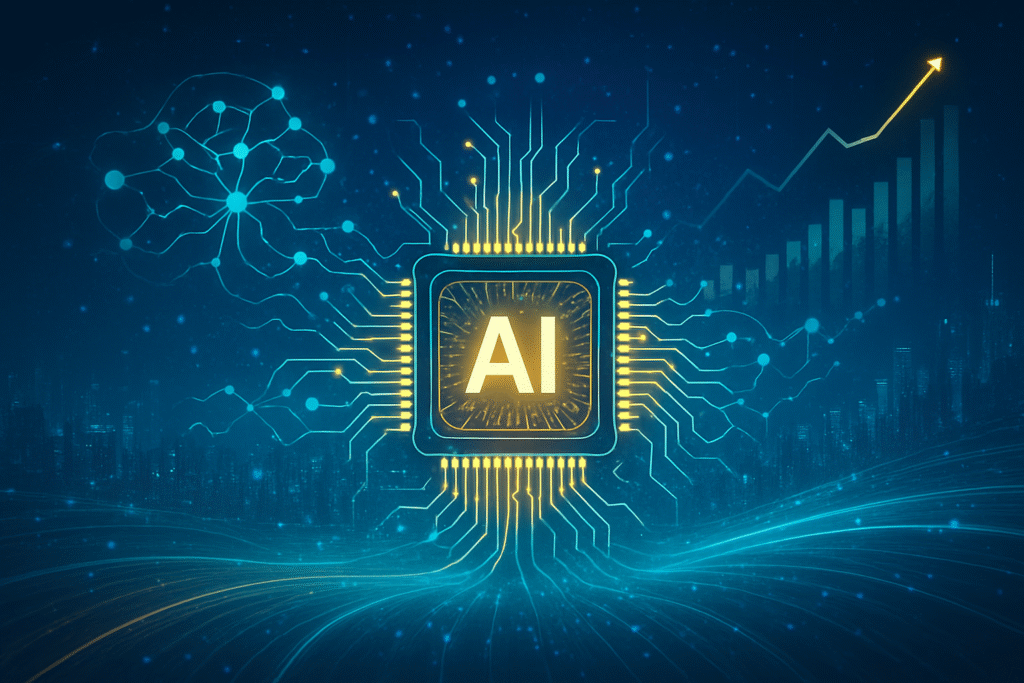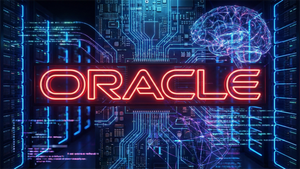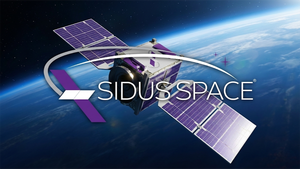
The semiconductor industry is currently riding an unprecedented wave of growth, largely propelled by the insatiable demands of artificial intelligence. Amidst this boom, Techwing, Inc. (KOSDAQ:089030), a key player in the semiconductor equipment sector, has captured headlines with a stunning 62% surge in its stock price over the past thirty days, contributing to an impressive 56% annual gain. This remarkable performance, culminating in early October 2025, serves as a compelling case study for the factors driving success in the current, AI-dominated semiconductor market.
Techwing's ascent is not merely an isolated event but a clear indicator of a broader "AI supercycle" that is reshaping the global technology landscape. While the company faced challenges in previous years, including revenue shrinkage and a net loss in 2024, its dramatic turnaround in the second quarter of 2025—reporting a net income of KRW 21,499.9 million compared to a loss in the prior year—has ignited investor confidence. This shift, coupled with the overarching optimism surrounding AI's trajectory, underscores a pivotal moment where strategic positioning and a focus on high-growth segments are yielding significant financial rewards.
The Technical Underpinnings of a Market Resurgence
The current semiconductor boom, exemplified by Techwing's impressive stock performance, is fundamentally rooted in a confluence of advanced technological demands and innovations, particularly those driven by artificial intelligence. Unlike previous market cycles that might have been fueled by PCs or mobile, this era is defined by the sheer computational intensity of generative AI, high-performance computing (HPC), and burgeoning edge AI applications.
Central to this technological shift is the escalating demand for specialized AI chips. These are not just general-purpose processors but highly optimized accelerators, often incorporating novel architectures designed for parallel processing and machine learning workloads. This has led to a race among chipmakers to develop more powerful and efficient AI-specific silicon. Furthermore, the memory market is experiencing an unprecedented surge, particularly for High Bandwidth Memory (HBM). HBM, which saw shipments jump by 265% in 2024 and is projected to grow an additional 57% in 2025, is critical for AI accelerators due to its ability to provide significantly higher data transfer rates, overcoming the memory bottleneck that often limits AI model performance. Leading memory manufacturers like SK Hynix (KRX:000660), Samsung Electronics (KRX:005930), and Micron Technology (NASDAQ: MU) are heavily prioritizing HBM production, commanding substantial price premiums over traditional DRAM.
Beyond the chips themselves, advancements in manufacturing processes and packaging technologies are crucial. The mass production of 2nm process nodes by industry giants like TSMC (NYSE: TSM) and the development of HBM4 by Samsung in late 2025 signify a relentless push towards miniaturization and increased transistor density, enabling more complex and powerful chips. Simultaneously, advanced packaging technologies such as CoWoS (Chip-on-Wafer-on-Substrate) and FOPLP (Fan-Out Panel Level Packaging) are becoming standardized, allowing for the integration of multiple chips (e.g., CPU, GPU, HBM) into a single, high-performance package, further enhancing AI system capabilities. This holistic approach, encompassing chip design, memory innovation, and advanced packaging, represents a significant departure from previous semiconductor cycles, demanding greater integration and specialized expertise across the supply chain. Initial reactions from the AI research community and industry experts highlight the critical role these hardware advancements play in unlocking the next generation of AI capabilities, from larger language models to more sophisticated autonomous systems.
Competitive Dynamics and Strategic Positioning in the AI Era
The robust performance of companies like Techwing and the broader semiconductor market has profound implications for AI companies, tech giants, and startups alike, reshaping competitive landscapes and driving strategic shifts. The demand for cutting-edge AI hardware is creating clear beneficiaries and intensifying competition across various segments.
Major AI labs and tech giants, including NVIDIA (NASDAQ: NVDA), Google (NASDAQ: GOOGL), Microsoft (NASDAQ: MSFT), and Amazon (NASDAQ: AMZN), stand to benefit immensely, but also face the imperative to secure supply of these critical components. Their ability to innovate and deploy advanced AI models is directly tied to access to the latest GPUs, AI accelerators, and high-bandwidth memory. Companies that can design their own custom AI chips, like Google with its TPUs or Amazon with its Trainium/Inferentia, gain a strategic advantage by reducing reliance on external suppliers and optimizing hardware for their specific software stacks. However, even these giants often depend on external foundries like TSMC for manufacturing, highlighting the interconnectedness of the ecosystem.
The competitive implications are significant. Companies that excel in developing and manufacturing the foundational hardware for AI, such as advanced logic chips, memory, and specialized packaging, are gaining unprecedented market leverage. This includes not only the obvious chipmakers but also equipment providers like Techwing, whose tools are essential for the production process. For startups, access to these powerful chips is crucial for developing and scaling their AI-driven products and services. However, the high cost and limited supply of premium AI hardware can create barriers to entry, potentially consolidating power among well-capitalized tech giants. This dynamic could disrupt existing products and services by enabling new levels of performance and functionality, pushing companies to rapidly adopt or integrate advanced AI capabilities to remain competitive. The market positioning is clear: those who control or enable the production of AI's foundational hardware are in a strategically advantageous position, influencing the pace and direction of AI innovation globally.
The Broader Significance: Fueling the AI Revolution
The current semiconductor boom, underscored by Techwing's financial resurgence, is more than just a market uptick; it signifies a foundational shift within the broader AI landscape and global technological trends. This sustained growth is a direct consequence of AI transitioning from a niche research area to a pervasive technology, demanding unprecedented computational resources.
This phenomenon fits squarely into the narrative of the "AI supercycle," where exponential advancements in AI software are continually pushing the boundaries of hardware requirements, which in turn enables even more sophisticated AI. The impacts are far-reaching: from accelerating scientific discovery and enhancing enterprise efficiency to revolutionizing consumer electronics and driving autonomous systems. The projected growth of the global semiconductor market, expected to reach $697 billion in 2025 with AI chips alone surpassing $150 billion, illustrates the sheer scale of this transformation. This growth is not merely incremental; it represents a fundamental re-architecture of computing infrastructure to support AI-first paradigms.
However, this rapid expansion also brings potential concerns. Geopolitical tensions, particularly regarding semiconductor supply chains and manufacturing capabilities, remain a significant risk. The concentration of advanced manufacturing in a few regions could lead to vulnerabilities. Furthermore, the environmental impact of increased chip production and the energy demands of large-scale AI models are growing considerations. Comparing this to previous AI milestones, such as the rise of deep learning or the early internet boom, the current era distinguishes itself by the direct and immediate economic impact on core hardware industries. Unlike past software-centric revolutions, AI's current phase is fundamentally hardware-bound, making semiconductor performance a direct bottleneck and enabler for further progress. The massive collective investment in AI by major hyperscalers, projected to triple to $450 billion by 2027, further solidifies the long-term commitment to this trajectory.
The Road Ahead: Anticipating Future AI and Semiconductor Developments
Looking ahead, the synergy between AI and semiconductor advancements promises a future filled with transformative developments, though not without its challenges. Near-term, experts predict a continued acceleration in process node miniaturization, with further advancements beyond 2nm, alongside the proliferation of more specialized AI accelerators tailored for specific workloads, such as inference at the edge or large language model training in the cloud.
The horizon also holds exciting potential applications and use cases. We can expect to see more ubiquitous AI integration into everyday devices, leading to truly intelligent personal assistants, highly sophisticated autonomous vehicles, and breakthroughs in personalized medicine and materials science. AI-enabled PCs, projected to account for 43% of shipments by the end of 2025, are just the beginning of a trend where local AI processing becomes a standard feature. Furthermore, the integration of AI into chip design and manufacturing processes themselves is expected to accelerate development cycles, leading to even faster innovation in hardware.
However, several challenges need to be addressed. The escalating cost of developing and manufacturing advanced chips could create a barrier for smaller players. Supply chain resilience will remain a critical concern, necessitating diversification and strategic partnerships. Energy efficiency for AI hardware and models will also be paramount as AI applications scale. Experts predict that the next wave of innovation will focus on "AI-native" architectures, moving beyond simply accelerating existing computing paradigms to designing hardware from the ground up with AI in mind. This includes neuromorphic computing and optical computing, which could offer fundamentally new ways to process information for AI. The continuous push for higher bandwidth memory, advanced packaging, and novel materials will define the competitive landscape in the coming years.
A Defining Moment for the AI and Semiconductor Industries
Techwing's remarkable stock performance, alongside the broader financial strength of key semiconductor companies, serves as a powerful testament to the transformative power of artificial intelligence. The key takeaway is clear: the semiconductor industry is not merely experiencing a cyclical upturn, but a profound structural shift driven by the insatiable demands of AI. This "AI supercycle" is characterized by unprecedented investment, rapid technological innovation in specialized AI chips, high-bandwidth memory, and advanced packaging, and a pervasive impact across every sector of the global economy.
This development marks a significant chapter in AI history, underscoring that hardware is as critical as software in unlocking the full potential of artificial intelligence. The ability to design, manufacture, and integrate cutting-edge silicon directly dictates the pace and scale of AI innovation. The long-term impact will be the creation of a fundamentally more intelligent and automated world, where AI is deeply embedded in infrastructure, products, and services.
In the coming weeks and months, industry watchers should keenly observe several key indicators. Keep an eye on the earnings reports of major chip manufacturers and equipment suppliers for continued signs of robust growth. Monitor advancements in next-generation memory technologies and process nodes, as these will be crucial enablers for future AI breakthroughs. Furthermore, observe how geopolitical dynamics continue to shape supply chain strategies and investment in regional semiconductor ecosystems. The race to build the foundational hardware for the AI revolution is in full swing, and its outcomes will define the technological landscape for decades to come.
This content is intended for informational purposes only and represents analysis of current AI developments.
TokenRing AI delivers enterprise-grade solutions for multi-agent AI workflow orchestration, AI-powered development tools, and seamless remote collaboration platforms.
For more information, visit https://www.tokenring.ai/.






